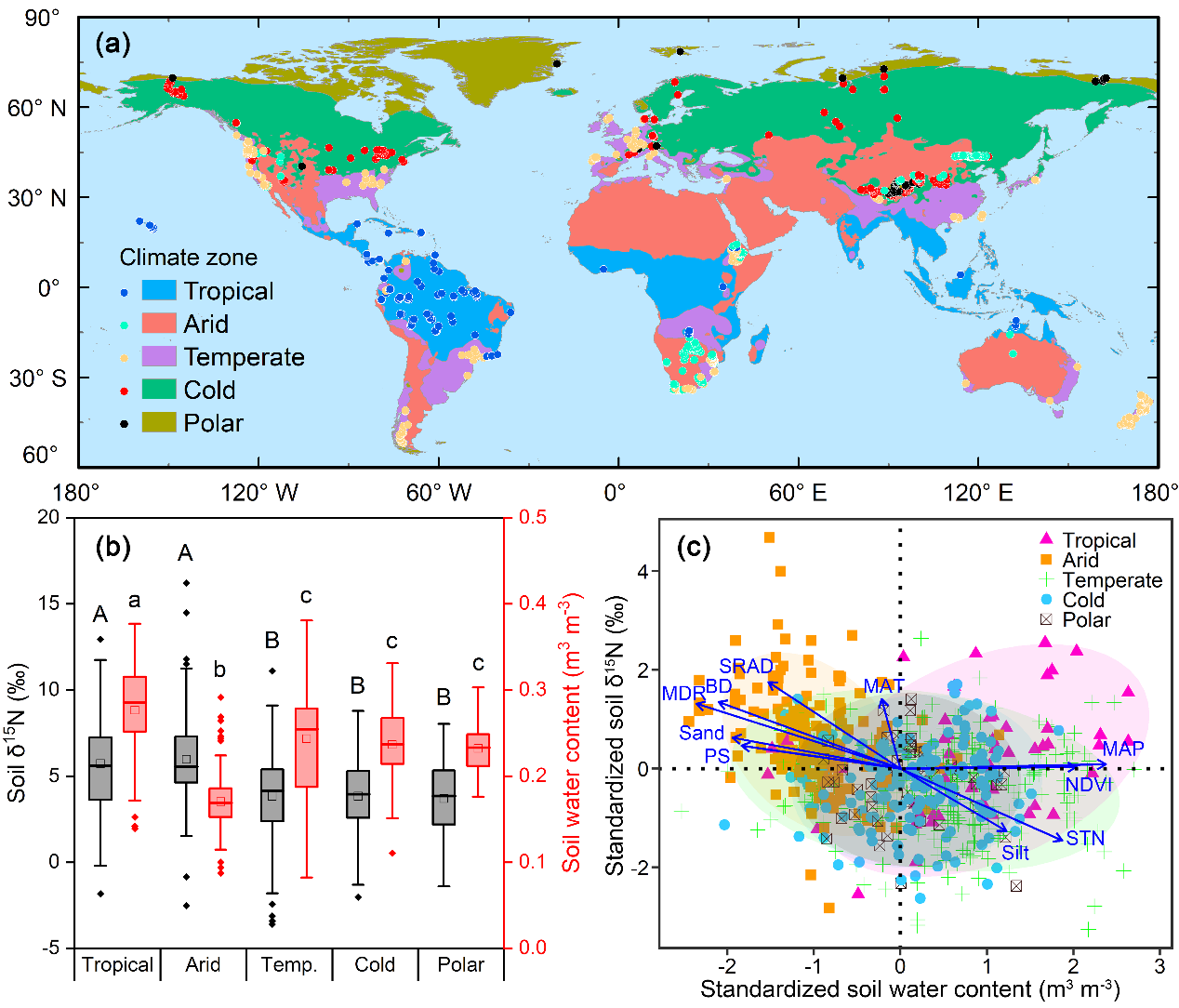Researchers conclude the critical controls for spatial patterns of soil δ15N in different climate zones of the globe
The natural abundance of soil nitrogen (N) stable isotope (δ15N) is a good proxy indicating the integrative soil N cycling processes and fluxes over long time scale.
However, its spatial pattern in the globe is not well understood, mostly due to the inconsistent relationships between soil δ15N and the relevant environmental variables found in different regions. In addition, the association with soil water content (SWC), which is a critical factor regulating soil N cycling process, has drawn less attention.
Therefore, researchers led by Prof. ZHU Qing from Nanjing Institute of Geography and Limnology of the Chinese Academy of Sciences investigated the relationship between soil δ15N and SWC at global scale, and accordingly explored the key controls of soil δ15N in different climate zones.
The hypothesis is that investigating the relationship between soil δ15N and SWC can help to explain the controls of the spatial pattern of soil δ15N across regions, as SWC was also controlled by interactions among climate, soil and vegetation.
This work was recently published on Catena.
Results revealed an upward-concave relationship between soil δ15N and SWC based on the soil δ15N and SWC data in 910 grids of the globe. Higher soil δ15N existed at both the dry and wet ends of the SWC. In addition, inconsistent relationships in five Koppen-Geiger climate zones constituted this upward-concave relationship. “Our findings are expected to deepen understandings on the spatial pattern of soil δ15N and the indicated N cycle at the global scale,” said Prof. ZHU.
Positive relationship between soil δ15N and SWC in the Tropical zone determined the increasing trend of soil δ15N at the wet end in the globe. It was mainly casued by the hydrologically regulated soil N losses. Increased SWC under the warm and moist condition would promote the denitrification and thus a lot of N gaseous losses as N2O and N2, and also trigger surface runoff and subsurface flow, and thus drive dissolved and particulate N losses.
Negative relationship in the Arid zone determined the decreasing trend at the dry end in the globe. Increased proportions of abiotic N losses like ammonia volatilization and N supplement through bedrock weathering (higher δ15N) with the decrease of SWC under the dry, hot and infertile soil condition may be the main reasons.
Poor relationships between soil δ15N and SWC in the Temperate, Cold and Polar zones constituted the transition range of the upward-concave relationship in the globe. Not hydrologically regulated but climatically limited determined the low soil N losses and thus low soil δ15N in these zones.

